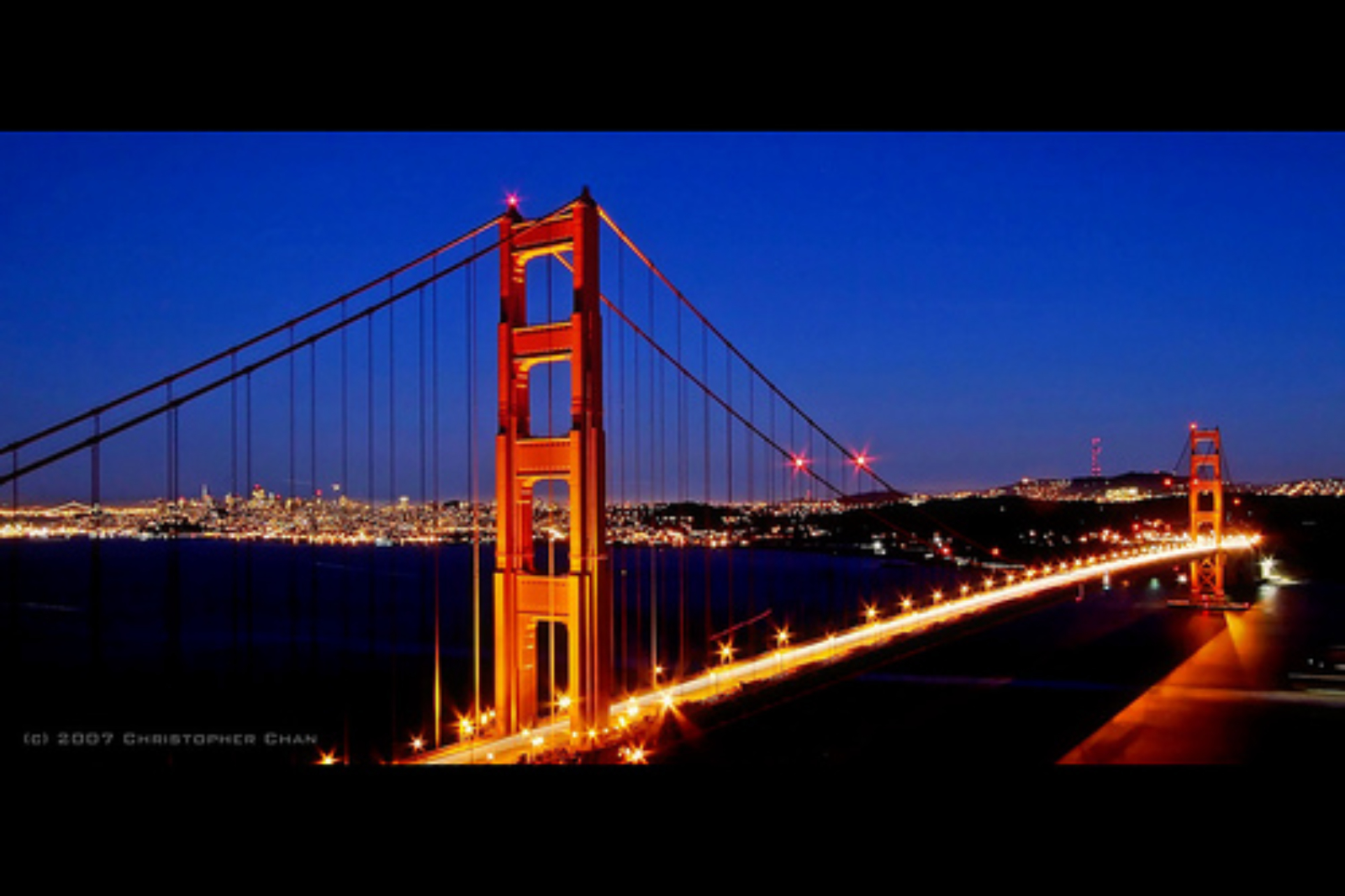Site overview
The Golden Gate Bridge is San Francisco’s most iconic and recognized structure, and stands as both an engineering and a design achievement. Two soaring towers support the massive catenary cables from with the bridge deck is suspended, spanning the entrance to San Francisco bay, and connecting San Francisco to Marin County. Designing a bridge to cover a distance of 6,700 feet over a deep straight with strong winds and water currents was a tremendous engineering challenge in the 1920s. During the course of its design it morphed from an ugly combined cantilever and suspension model with an entrance portal imitating the Arc de Triomphe de L’Etoile in Paris to the graceful suspension bridge we know today. The suspension design is credited to Leon Moisseiff, a New York bridge designer. The design was further refined and simplified by the first consulting architect, John Eberson, a nationally known architect of lavish theaters with an emphasis on special effects. He introduced Art Deco elements and the stepping or indented towers, which are slimmer at the top to emphasize the height of the towers. Design for the toll plazas was given to the local architecture team of Irving and Gertrude Morrow. The row of elongated Art Deco toll booths under a unifying roof resembles a portal and clearly demarcates the bridge’s south end. The Morrows are credited with proposing and selecting the bridge’s distinctive orange color.


